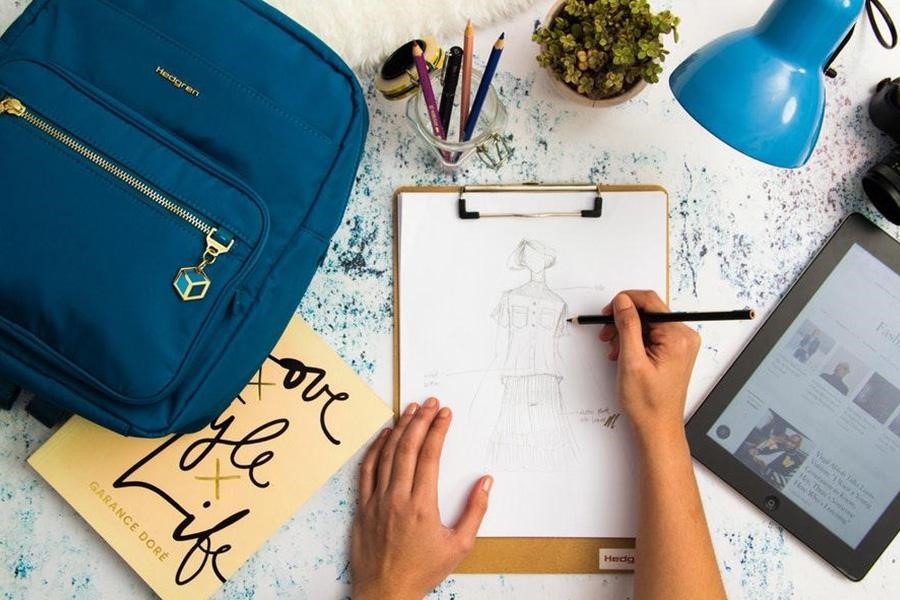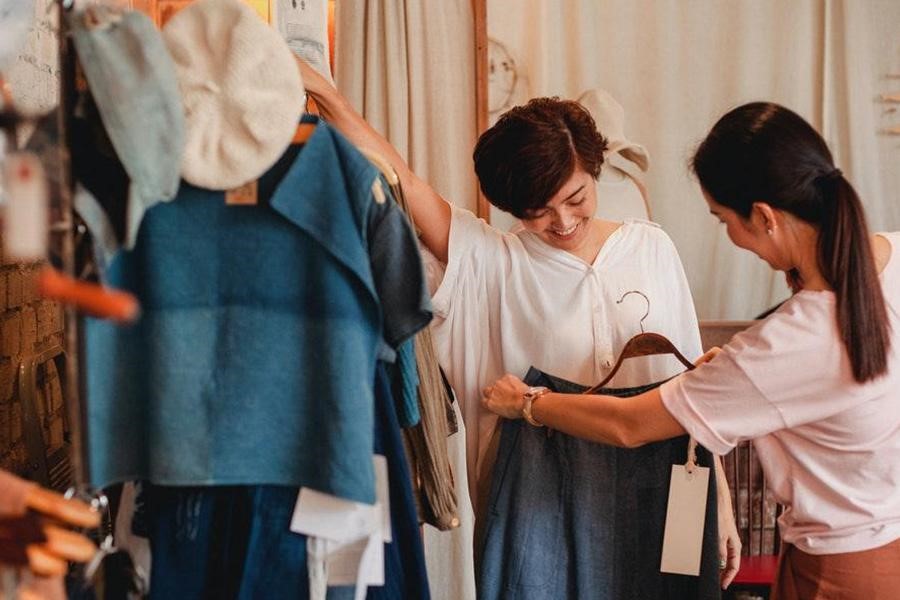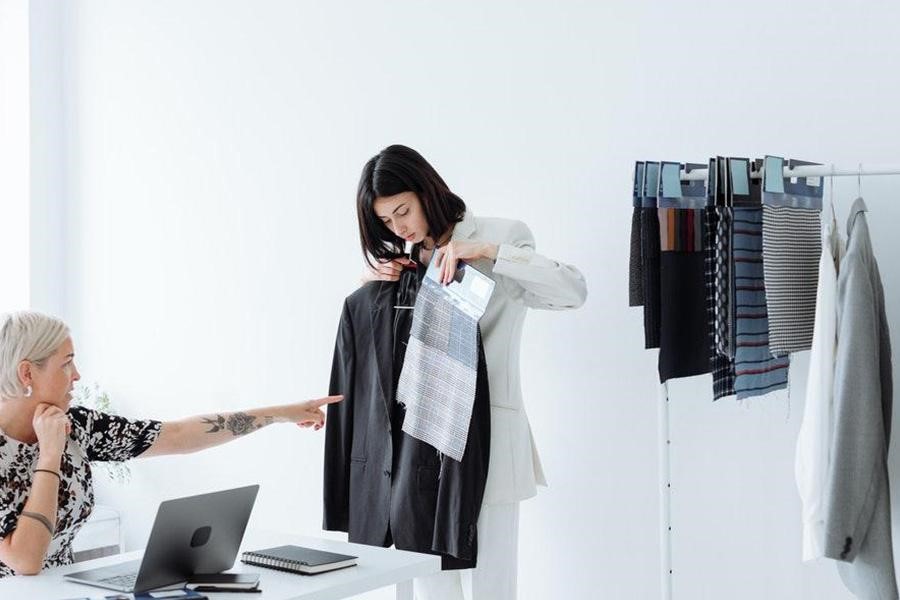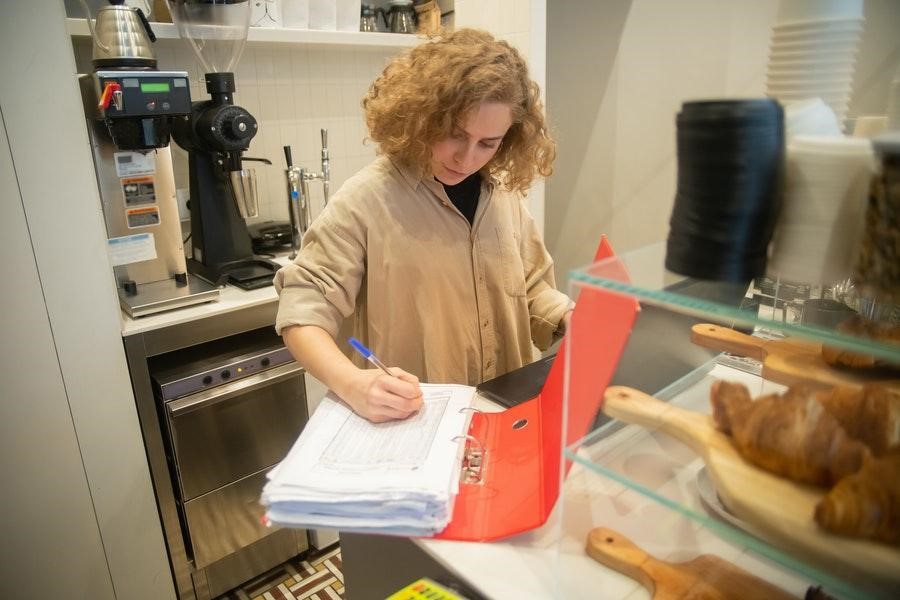Running a clothing business, especially via eCommerce stores, online marketplaces or social media platforms can be a great opportunity for aspiring entrepreneurs. But taking it off the ground and transforming the thought to a reality can be a daunting task.
That’s why this article will share nine simple steps that can be used to start a clothing business with confidence. If this sounds like something you’re interested in, keep reading to find out more.
Table of Contents
The growth of the global clothing market
9 steps to start a successful clothing business
The risks that come with the clothing business
Make your fashion retail aspirations a reality
The growth of the global clothing market
The current revenue size of the fashion clothing industry is $0.99 trillion, and it’s expected to hit $1.39 trillion by 2025, registering a compound annual growth rate (CAGR) of 11.96 percent from 2022 to 2025. Likewise, the online clothing industry is expanding rapidly, with a projection to reach $295.7 billion in 2025 from $180.5 billion in 2021. This means the online fashion retail sector offers a great opportunity for prospective eCommerce entrepreneurs to enter this growing market.
9 steps to start a successful clothing business
1. Select a niche

Choosing a niche based on interests, hobbies, or passion isn’t always the safest way to start a clothing business. Instead, try to select a clothing niche based on prospective customers’ demands. This means it’s important to do one’s market research in advance. The time spent during the research stage usually pays off well later.
In terms of doing research, retailers can do either primary or secondary market research. They will have to personally gather data for primary research by running surveys with friends and families. The rule of thumb is to put out easy questionnaires that can be answered in multiple-choice or true-false format.
In contrast, secondary research involves retailers using data online from market surveys. Unlike primary research, this model may cost more, but it ultimately saves the stress of having to design and distribute surveys oneself. Plus, it may offer a global perspective of which clothing niches are trending in specific geographical locations.
Examples of specific clothing niche markets include: vintage clothing, women’s and men’s athleisure clothing lines, sustainable fashion, genderless fashion, amongst others.
2. Have a comprehensive business plan
A good business plan should cover everything a retailer wants to achieve in the first three to five years. But also keep in mind that while it’s great to plan, things won’t always work out as expected. So retailers should create flexible plans and be open to changes.
A business plan should contain the following:
- A proper market position strategic plan, which is important to ensure one has defined a competitive edge in the market.
- The company’s human resources assessment and the specifics of what the business aims to sell, as well as a product sourcing/production strategy.
- What the retailers want to accomplish with specific and measurable goals within a certain timeframe.
- How the retailers plan to meet these set goals with detailed strategies and steps.
- Lastly, it should include why the retailers think the company will succeed based on the market research, and an exit plan.
Retailers can also present their business plans to potential partners and investors. As a result, they may secure deals if the business plan is comprehensive, feasible, and appealing.
3. Start designing the clothes

Now it’s time to get creative and get to work. But, before the design starts, there are three things to note:
1. Creative ideas can strike anytime, so retailers should always have a notepad or sketchpad. This way, they won’t miss inspiration when it strikes.
2. Retailers should try creating samples from scratch, even if they get inspiration from other top designs. It would help them to have a better understanding of their creation process. Also, small businesses can save a lot of money this way over outsourcing the design to a freelancer.
3. Never cut corners to save cost and compromise on the quality of materials or products, as having good quality products will be essential to the business in the long run.
4. Find great suppliers

This step is crucial because it would be hard to run a reputable clothing line without good suppliers. To find overseas suppliers and manufacturers, retailers can search trusted online platforms and communities. With reliable overseas suppliers, retailers can save money and get their products without traveling halfway around the world. To find reputable manufacturers online, retailers can check the listings of suppliers for reviews written by other clothing brands.
Retailers who prefer sourcing supplies locally can look out for domestic suppliers. Sourcing locally may lead to quicker production and distribution times, but it could also mean limitations in getting certain supplies.
Ultimately, the decision to source internationally or locally depends on the specific needs of the business, which should be outlined in the business plan (see step 2).
5. Choose the price point for the clothing brand

Pricing is an integral factor that can determine the success or failure of a clothing business.In order to set a reasonable price, retailers need to factor in their cost of production, materials, labor, and contingency costs.
But that’s not all. Retailers should also consider renting a warehouse, shipping costs, and employee payroll. After summing up all the costs, retailers will be better placed to estimate a price that covers every product per unit.
If business owners find it hard to set a price for their clothing line, they can use the keystone markup method. Here, they can double the cost price to cover the costs and ensure a profit. For example, if it costs $50 to make one jacket, retailers can sell it for $100. Alternatively, they can sell to wholesalers at $100 and sell in their local or online store for $150 or $200.
6. Test product and take it to the market

Testing is a great way to know if a product will satisfy its target audience. Retailers can test their products by presenting them to small focus groups or by selling locally, which can allow them to get real-time feedback. Examples could include getting feedback from one’s circle of friends, or by selling at local school fairs or market trading spaces.Through doing so, retailers can take note of customer opinions and observe if there’s a need to modify their clothing designs or not.
7. Promote and scale the clothing brand
Marketing is another important step to consider when starting a clothing brand. Retailers should therefore aim to create solid marketing plans, strategies, and campaigns before launching their brand.
This can be done by setting up social media ad campaigns, especially on Facebook. Plus, this may allow one to build a customer base before the product launches.
Retailers with tighter budgets can employ organic strategies on social media and the internet. For example, instead of paying for ads, they can create valuable content for their blogs or social media pages to drive traffic and attract a customer base
Influencer marketing is another excellent way for brands with low budgets to publicize their clothing line. Retailers can offer clothes to influencers for free in exchange for a mention. Running giveaways for potential customers is another way retailers can attract attention, as well as using email marketing to launch their store and promote their products.
8. Identify what makes the clothing brand stay afloat and keep at it

After a successful launch, retailers need to keep their clothing business running by consistently turning a profit.
Retailers can use the customer lifetime value (CLV) as a key metric to evaluate their business success. Also, retailers can use the direct-to-consumer (DTC) model as another essential metric, where customers register for recurring delivery of items. Examples of DTC services retailers can use are Dollar Shave Club, the Honest Company, and Casper.
Also, retailers should set aside a yearly marketing budget that they can use to keep their brand afloat. Additionally, if they notice a drop in performance and sales, retailers can run a review and change their strategies to get back on track.
9. Leverage on a soft launch

It’s ideal for retailers to run a soft launch before investing a lot of cash into their clothing business. That way, they will see how their business thrives with little resources and figure out how to scale. If retailers can get a working formula for the business, they can take it up for funding.
The risks that come with the clothing business
Not keeping up with the latest trends
Running a clothing business requires one to keep up with fashion trends constantly, and these trends are always changing. So a brand will need solid research, development, and assessment strategy to remain in vogue.
Brands can lose their customer base if they fail to keep up with the latest clothing trends. Falling out of sync with fashion trends can also impact brand credibility, produce excessive inventory, and create a confused brand identity.
Retailers can avoid this risk by ensuring they follow the latest trends, as well as dropping declining trends early. To stay on top of things, larger retailers can hire the services of fashion trend experts.
High costs of production
Production costs in the clothing industry are never stable. So, it’s normal for retailers to face unexpected price changes due to demand/supply of goods or inflation. The best way to mitigate this risk is to leverage the power of outsourcing to curb overhead costs.
Poor production quality
One big issue clothing business owners face is outsourcing clothing fabrics and getting sub-standard products, which leads to poor customer satisfaction. It may be a challenge to get highly-trusted and reliable suppliers that can deliver, and manufacturing could be costly for a startup clothing business. So, it’s advisable to employ the services of a quality control company in the supplier’s country to monitor and check the state of goods before shipping them.
Poor inventory management system

Poor inventory management can negatively impact sales of the clothing business. When a retailer is low in inventory, they can delay sales which can result in order cancellation and customer complaints. Also, the cost of excessive storage can also impact the businesses budget.
Retailers can therefore engage in proper inventory management by taking account of each stock to avoid losing money. They can use inventory management software like Gofrugal or Fishbowl. Or alternatively, retailers can outsource inventory management to a reputable expert.
Distribution issues
While most businesses find it easier to handle designing and production, distribution can be tricky. These challenges aren’t new for clothing brands, as many retailers usually put time and effort into getting their products into stores but still fail.
To break through, retailers have to put in extra effort to secure deals and network with the right people to get their clothes in various stores.
Intense competition
The clothing fashion market is highly competitive and can make it very hard for emerging brands to get noticed. Considering the thousands of clothing brands available in the market, it’s a challenge to get established and grow a customer base. But businesses up for the challenge certainly can break through, and the benefits of joining this exciting and fast-paced industry can make it worth the effort.
Make your fashion retail aspirations a reality
Starting a clothing line can be a high-risk undertaking, but it can also be very rewarding. The nine steps presented here are aimed at helping new retailers to reduce their risks and ultimately to succeed. Being new to the fashion industry, retailers can think up a careful plan and identify their niche, and from there do what it takes to stand out. With that said, aspiring fashion entrepreneurs can check out these fantastic clothing trends for more inspiration.




